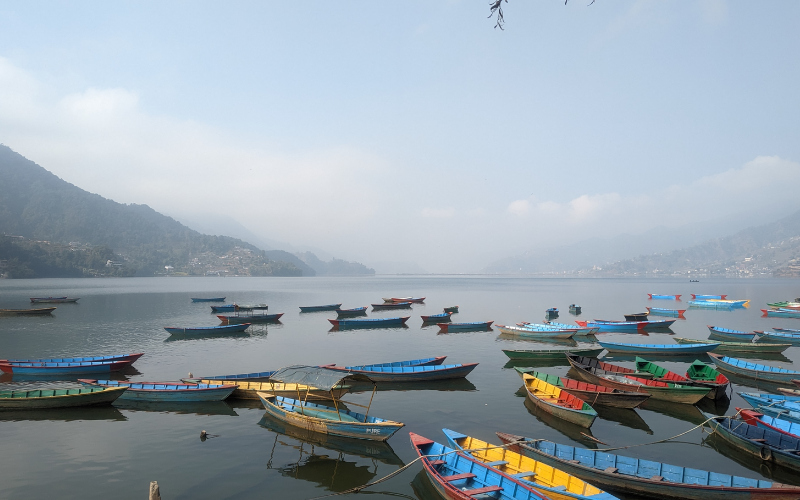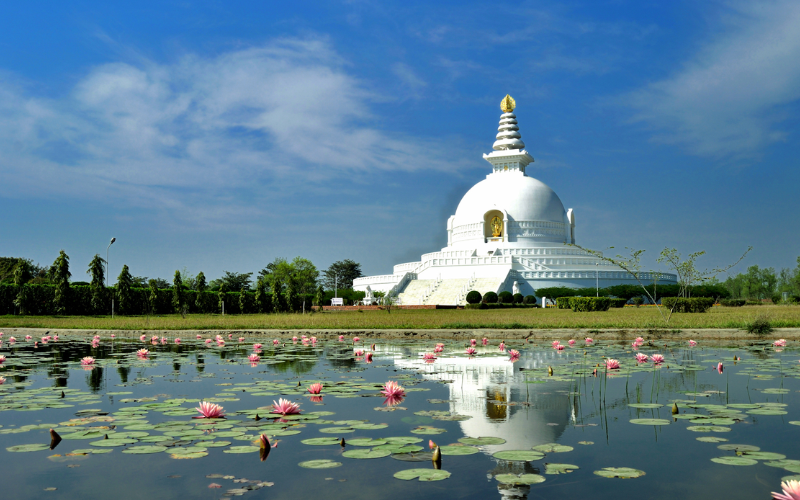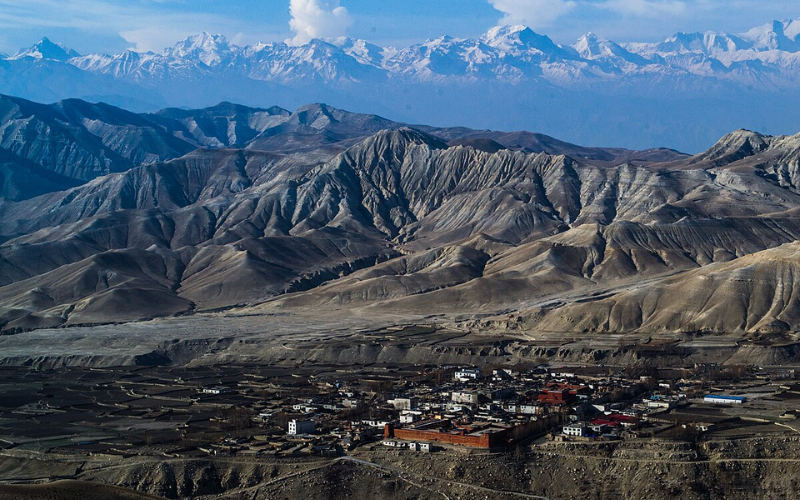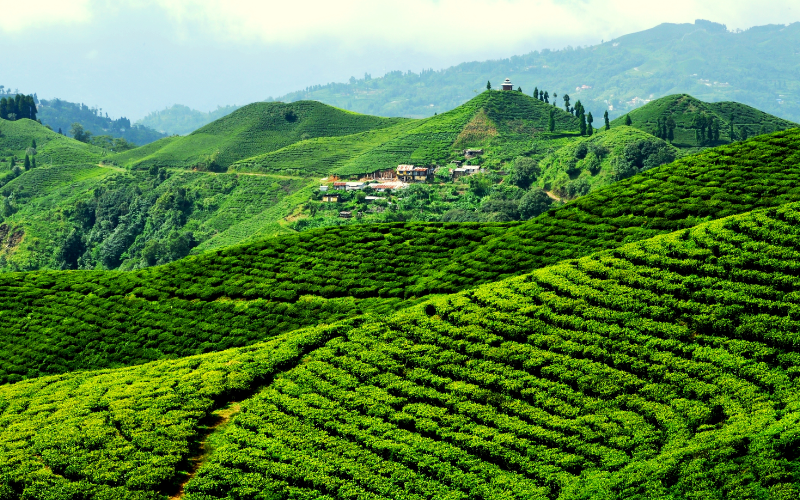Nestled in the heart of the Himalayas, Nepal is a destination that enchants travellers throughout the year. While many associate it with challenging treks and snow-covered peaks, the winter months—December to February—offer a completely different experience. With crystal-clear skies, fewer crowds, and a calm, crisp atmosphere, winter can be one of the best times to explore the country’s diverse landscapes and rich culture.
Here are some of the best places to visit in Nepal during winter, along with a few practical notes to make the most of your journey.
Pokhara – The City of Lakes
Situated beside the tranquil Phewa Lake, Pokhara is famous for its peaceful charm and panoramic mountain views. In winter, the city enjoys mild days averaging around 18–21 °C, making it pleasant for outdoor exploration.
Take a boat across the lake, hike to the World Peace Pagoda, or watch the sunrise from Sarangkot, where the Annapurna Range glows in golden hues. For the adventurous, paragliding and zip-lining are also popular year-round.
Why visit in winter: Clear mountain views, fewer tourists, and comfortable daytime temperatures.
Tip: Evenings can get chilly, so bring warm layers.

Kathmandu Valley – History, Heritage, and Culture
The Kathmandu Valley—home to Kathmandu, Patan, and Bhaktapur—offers a treasure trove of art, history, and spirituality. Winter days are crisp and dry, ideal for exploring Durbar Squares, Swayambhunath (Monkey Temple), and Pashupatinath Temple without the summer dust or monsoon humidity.
The season is also perfect for café-hopping and enjoying the valley’s vibrant rooftop dining scene.
Why visit in winter: Pleasant weather, clear skies, and rich cultural experiences.
Tip: Nights can be cold, especially in traditional buildings without heating.
.png)
Chitwan National Park – Jungle Adventures
For warmth and wildlife, head south to the Terai plains and Chitwan National Park, Nepal’s premier jungle reserve. Winter (December to February) is considered one of the best times for safaris, with dry conditions and excellent visibility. You may spot one-horned rhinos, deer, crocodiles, and even elusive Bengal tigers during jeep or canoe safaris.
Why visit in winter: Ideal temperatures for jungle activities and excellent wildlife-viewing opportunities.
Tip: Early mornings can be misty and cool, so start your safaris later in the morning.

Lumbini – The Birthplace of the Buddha
Located in Nepal’s southern plains, Lumbini is a serene spiritual destination, drawing pilgrims and peace-seekers from around the world. The Maya Devi Temple, monastic zone, and tranquil gardens are best explored in the cooler, drier winter months.
Why visit in winter: Comfortable weather for exploration and fewer visitors.
Tip: Combine your visit with nearby Kapilvastu or Tilaurakot for deeper historical insight.

Nagarkot and Dhulikhel – Panoramic Himalayan Views
Just an hour or two from Kathmandu, Nagarkot and Dhulikhel offer breathtaking views of the Himalayas, including Mount Everest on exceptionally clear days. Winter’s crisp air and stable weather make sunrise and sunset particularly spectacular.
These hilltop towns also offer charming lodges and resorts—perfect for a peaceful weekend getaway.
Why visit in winter: Unobstructed Himalayan views and peaceful surroundings close to the capital.
Tip: Mornings can be frosty, but the scenery is at its best then.

Bandipur – A Living Newari Heritage
Halfway between Kathmandu and Pokhara lies Bandipur, a beautifully preserved Newari town known for its traditional architecture and laid-back atmosphere. Winter days are sunny and cool, ideal for short hikes, cave exploration, or simply soaking in the mountain views from its cobbled high street.
Why visit in winter: Warm days, authentic culture, and old-world charm with panoramic vistas.
Tip: Accommodation fills up during the Christmas–New Year period, so book ahead.

Lower Mustang – Himalayan Landscapes Without the Crowds
For those seeking a touch of the high Himalayas, Lower Mustang—including Jomsom and Marpha—remains accessible in winter, though it can be bitterly cold. The region’s dry climate means clear skies and stunning, snow-dusted mountain views, along with fascinating Tibetan-influenced culture.
However, temperatures can drop below freezing, and some guesthouses close for the season.
Why visit in winter: Dramatic scenery, peaceful trails, and striking winter landscapes.
Tip: Pack proper cold-weather gear and check local conditions before travelling.

Ilam – The Tea Gardens of Eastern Nepal
If you prefer misty hills and rolling greenery, Ilam in eastern Nepal is a soothing escape. Known for its lush tea estates, serene lakes, and tranquil countryside, it offers a completely different side of Nepal. The winter climate is cool but comfortable, making it a great place to unwind and explore the scenic highlands.
Why visit in winter: Cool, refreshing air, picturesque tea gardens, and a peaceful rural setting.
Tip: Sunrise at Antu Danda offers sweeping views over the tea hills and eastern Himalayas.

Winter in Nepal offers a quieter, clearer, and more contemplative travel experience. From jungle safaris and lakeside strolls to ancient towns and snow-clad mountain vistas, the country’s diversity truly shines under the soft winter sun. With a warm coat, an adventurous spirit, and an open heart, Nepal in winter promises memories that linger long after the snow melts.
PC: Wikimedia Commons, Kushal Kafle, Bijay Chaurasia
Also Read